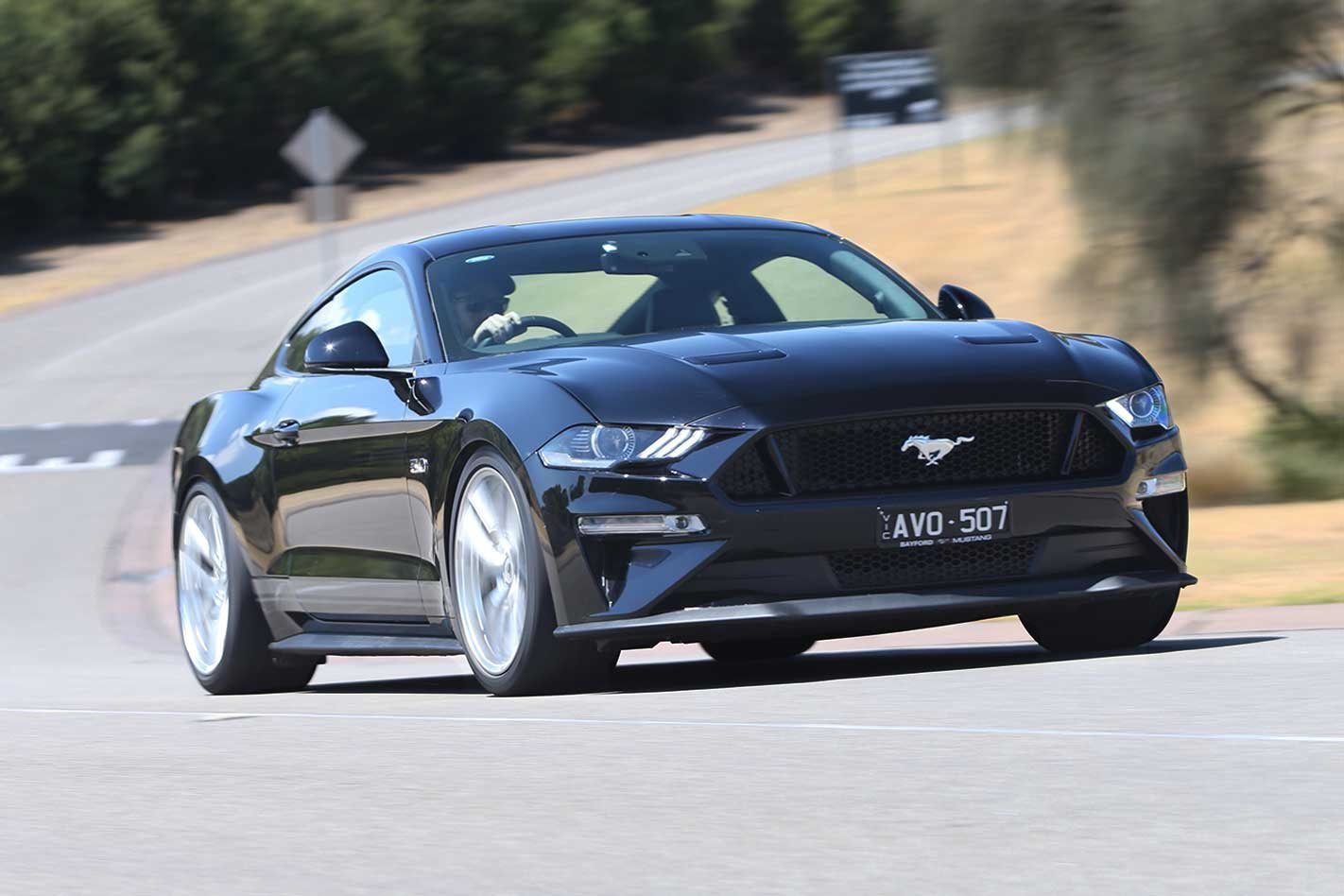Could it be that we’re starting to lean on the limits of the Ford Coyote 5.0-litre V8 as far as forced induction goes? After thumping the latest Tickford-modified blown pony around, I’m starting to think that might be the case. Here’s why.
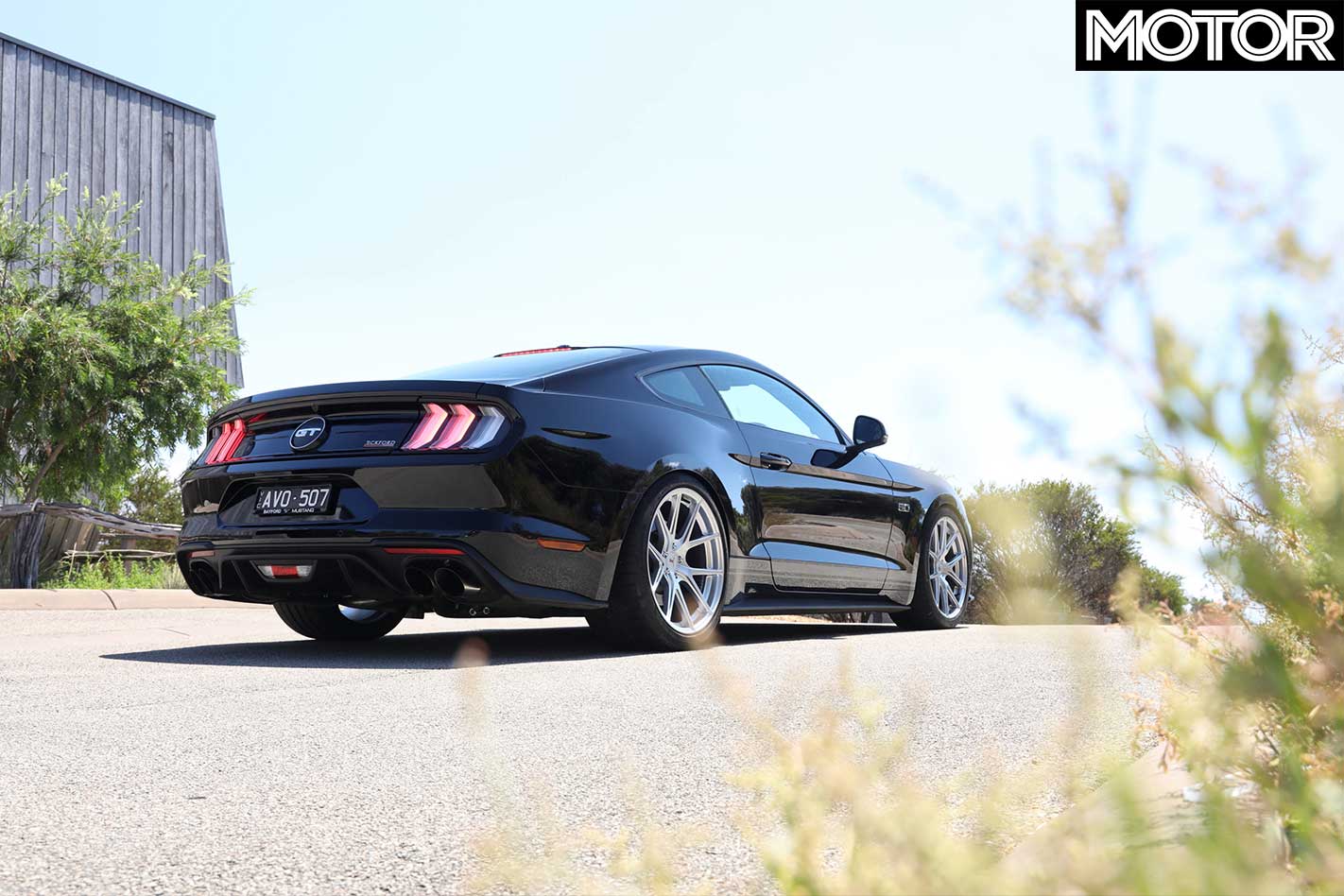
With the latest-gen Coyote, all roads travelled by those of a supercharging disposition have led to the House of Roush (well, most roads, anyway). In the old days, everybody would have their own theories and it’d be dyno-sheets at 10 paces. Not this time; with the budget and the smarts to develop a kit that takes a 339kW Coyote to way beyond 500kW, the Roush hardware seems to have become the go-to set-up. Fair enough.
But here’s where engineering types start biting their nails and the Coyote looks like it might be running out of tuning headroom. By blowing six or seven pounds of boost into a 12:1 compression-ratio V8, you’d have to imagine you’re getting pretty close to the ragged edge in terms of detonation and having the thing eat its own head gaskets out of spite.
Of course, with modern electronics, you can control the boost and take into account a whole slew of factors like combustion-chamber temp, and use that knowledge to adjust stuff like the fuel tables and spark curve to prevent a catastrophic failure.
Which I think is what was going on when I tried to run the Tickford Mustang down the Heathcote hotmix. I drove straight up from Melbourne, strapped the Driftbox to the Ford and clattered down the track for a low 13 (seconds) and a terminal speed of 182-something (km/h). About as fast as a stocker, then. Never mind, we’re still getting the feel of the thing and how to launch it, so let’s have another go.
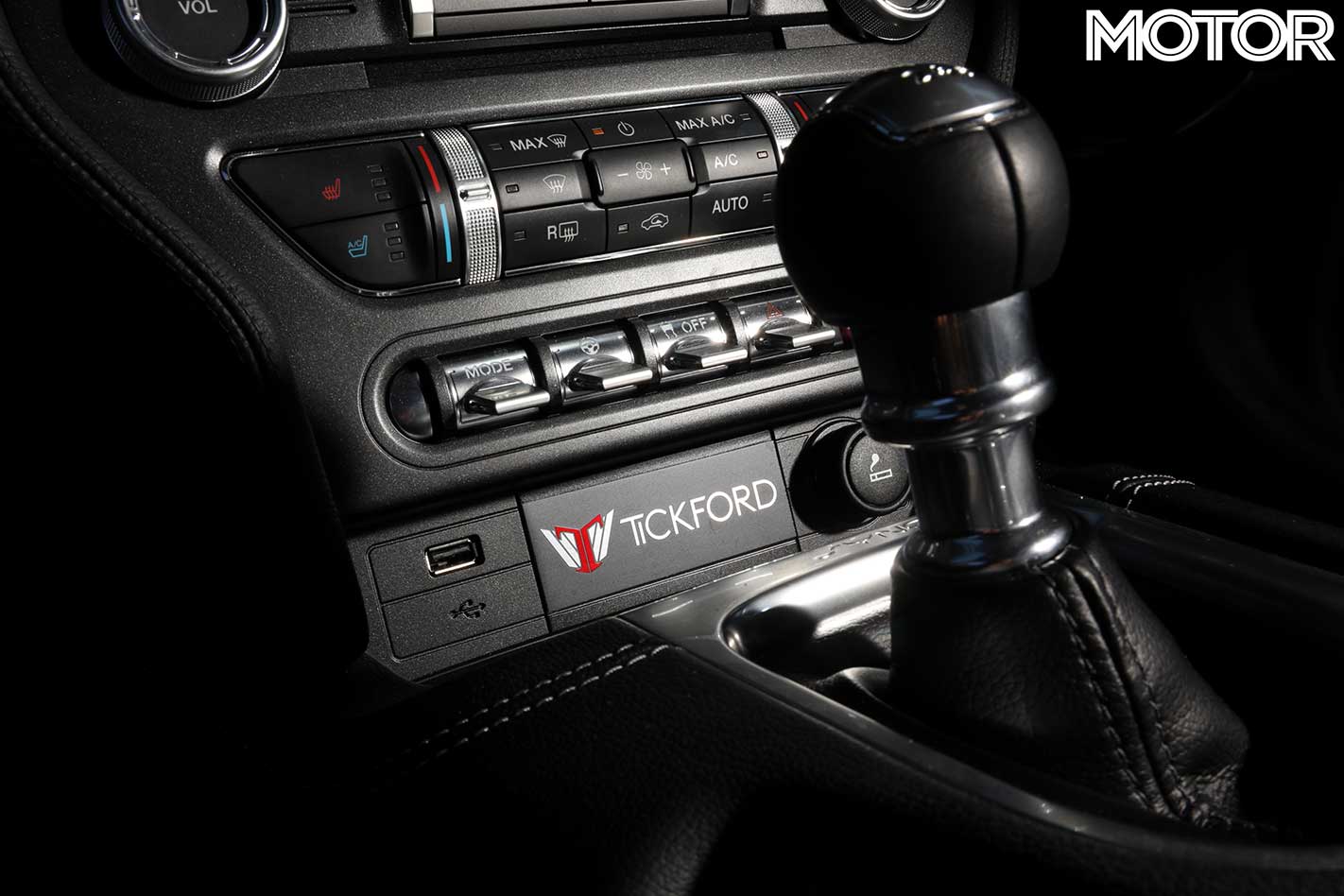
Only this time, the time went up and the terminal speed went down. Grip didn’t seem to be a problem, but a lack of top-end surge from about 6000rpm onwards sure was. In fact, the engine felt like it was either dumping boost or pulling loads of spark advance out of the picture at that point. Still felt super fit up to six on the tacho, but the last 1500rpm were killing it.
Even accounting for the fact that I might have been having a numpty moment, the terminal speeds the ’Stang was notching up just weren’t the stuff of a potential 11.0-second car. Yet, on the road, that’s exactly how fit the thing felt with heaps of mid-range and boxloads of torque. So what’s going on?
That’s precisely what we asked Tickford later that arvo. The white-coats there gave the car a once over and declared it fit for duty. Nothing wrong with it. So, the only thing I can suggest is that as the cylinder-head temps started to get up a bit after the first run, the ECU stepped in to prevent a melt-down as the revs rose and the boost curve got into its stride.

As an owner, you might be pretty chuffed about this. Except that it happened after just one run with an ambient temp of about 17 degrees.
We have a bit of background to this at Motor, too. Previous investigations with a blown Mustang and a dyno have suggested that once cylinder-head temps get above about 105 degrees, the 700-plus-horsepower show is all but over as the brain goes into survival mode.
Again, fair enough, but how mild do conditions have to be before you can rattle off half a dozen passes and get a proper 400m number? Will it do it at all? In the old days, you wouldn’t have dreamed of supercharging a 12:1 engine without decompressing it. Could it be time to revisit that rule of thumb?
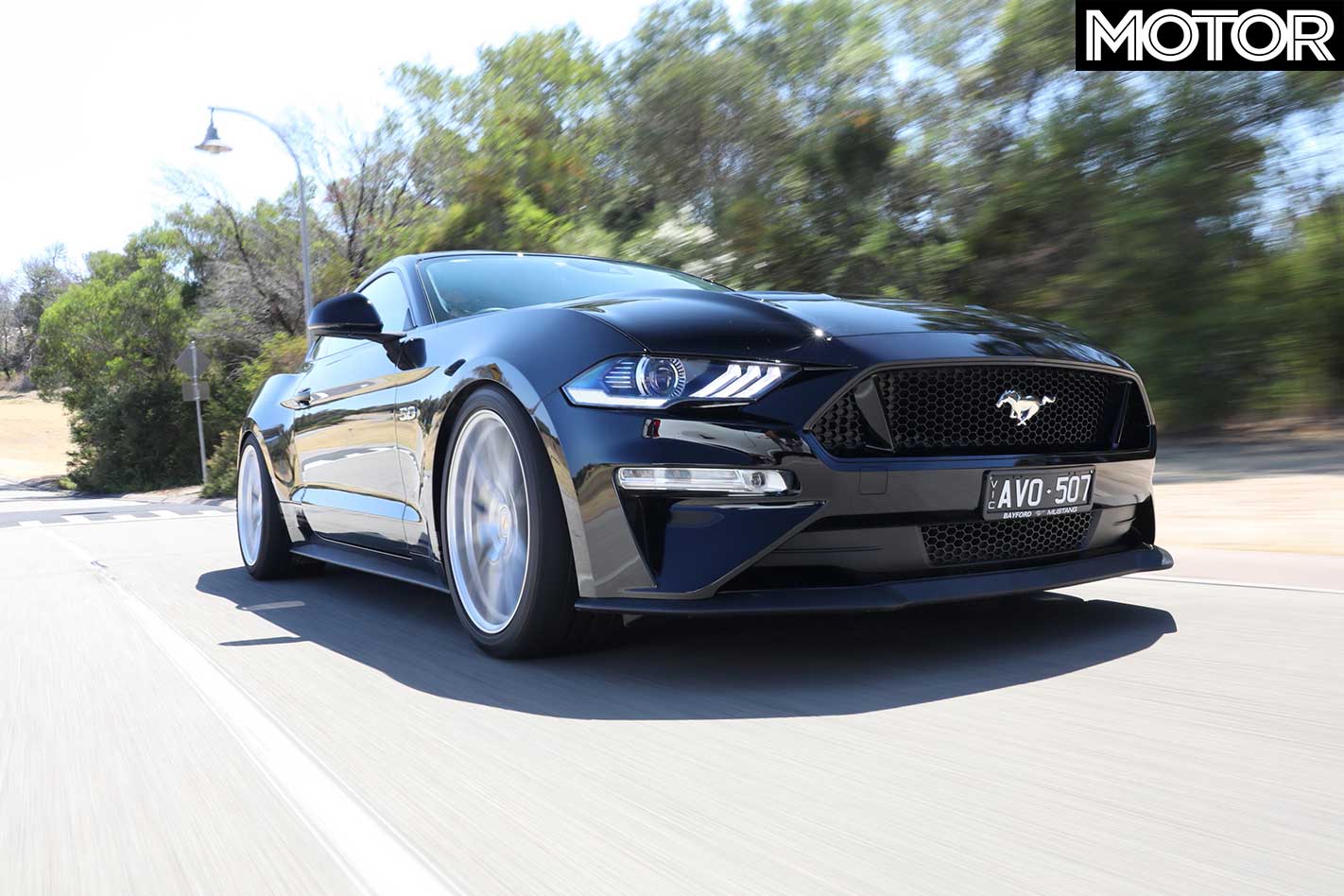
The true shame of it is that this has (otherwise) been my favourite MY19 Mustang yet. In the real world where the head-temps don’t go feral, this particular car was a total sweetheart. And that starts in an area where this particular package raises the bar for blown ’Stangs – the subject of driveability. Specifically in the way the engine and throttle are mapped.
Previous Roush-blown ’Stangs we’ve sampled recently have all had their share of foibles in this regard mainly in the form of a stutter or gurgle on light throttle at low revs. We’ve flagged it and while it’s been acknowledged, the strict terms of use from Roush Inc have meant that any fiddling of the tune is verboten.
The usual answer was that the factory was aware of it and was constantly issuing flash upgrades which would be applied to customers’ cars gratis. Fair enough, but does the glitch have to be there in first place? Seems not, because in the Tickford-Roush installation the problems simply do not exist. At all.
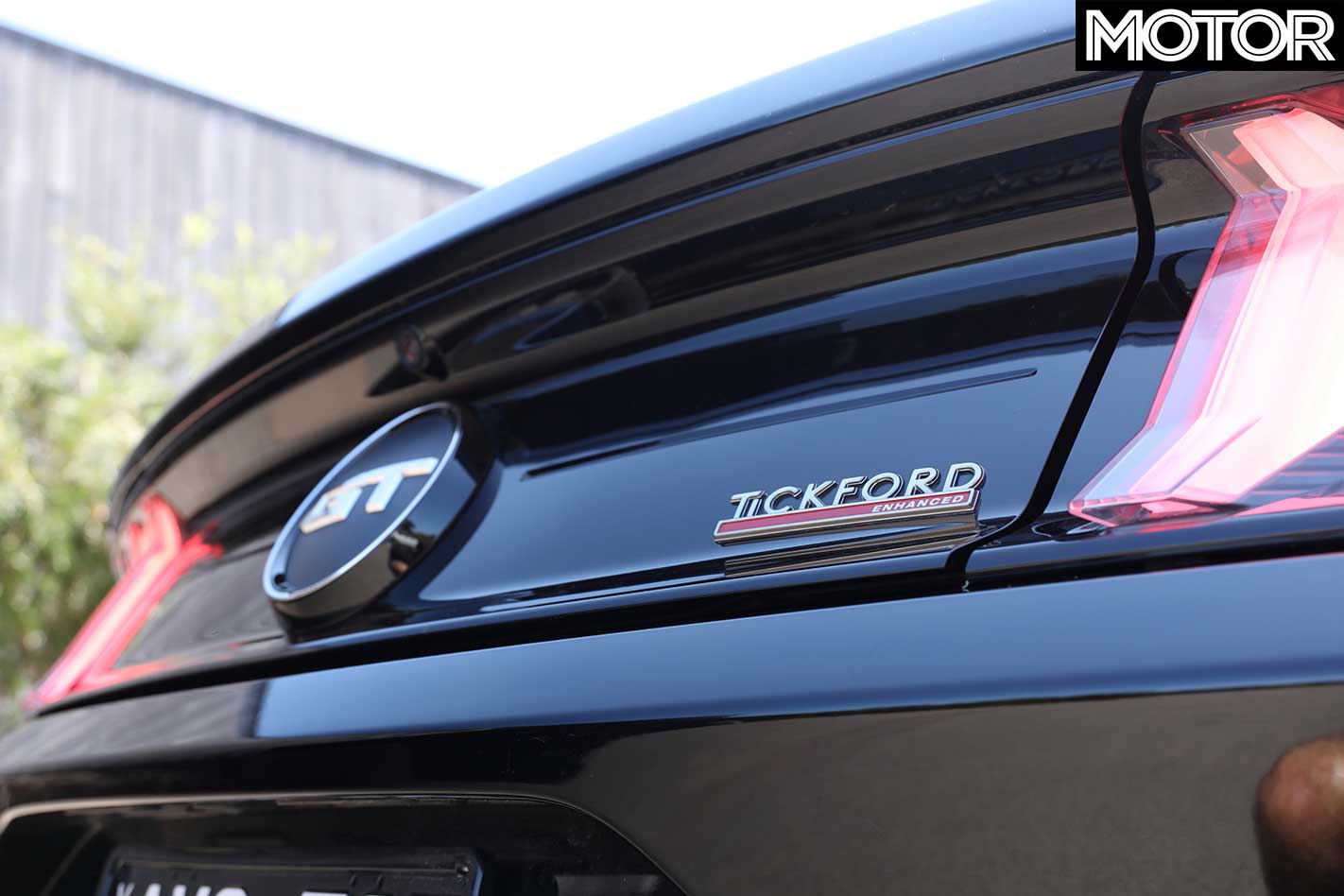
This has been such an issue, the first thing I did once the ’Stang was warmed up was to drop it into a tall gear and accelerate gently from just-off-idle revs – the exact circumstances that produced the staggers in every other Roush Mustang I’ve sat in. Now, either Tickford knows something that no other Ford tuner does, or Roush has revisited and fixed the electronic tune. Who knows. Who cares? But it’s sorted.
As such, what you get is a throttle and tip-in response that feels totally natural. And that’s a huge part of the experience in something with so much grunt as this as where part-throttle is a major part of life (unless you’re keen on fireside chats with Constable Unstable).
It’s also a factor given the overall tractability of the MY19 Coyote which, despite the 7500rpm redline, is otherwise happy at 1000rpm and sits on just 1600rpm at a legal 100km/h. And thanks to the blower-torque, you won’t need to backshift for hills. This is a fat curve, kids.
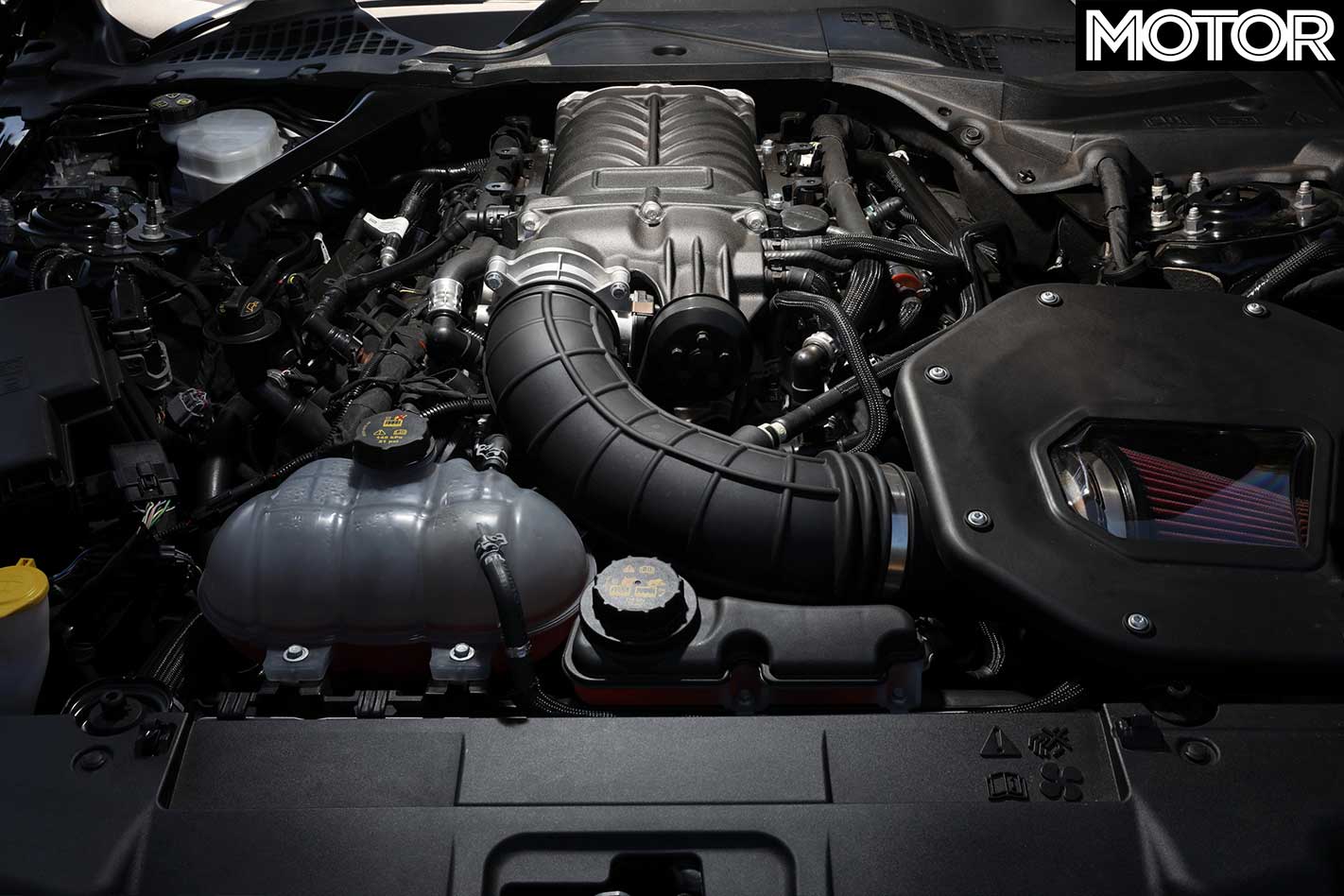
The one thing the ECU upgrades haven’t fixed is the general uselessness of the launch control program. And because launch only works with the traction-nannies engaged, it’s constantly kicking the sunshine out of the bugger at the smallest flare-up from the 295 Contis. It also seems you need to switch off both traction and ESP to get the thing to burnout.
The other highlight with the Tickford is the suspension which, after all, is the other thing that’s going to define the car if you use it daily. The gear itself is German-made H&R (and, from the website, appears to be made in a big shed behind a ginger-bread house in rural Chermany) and consists of coilovers replacing the stock ’Stang’s MacPherson struts and a specific coil and shock at the rear for a 25mm ride-height reduction. Gawd, it’s lovely.
Okay, so I reckon the springs are still a bit on the firm side in the way they pick up and amplify expansion joints, but the way the springs and dampers are matched, and integrated, stamps the set-up as the biz.
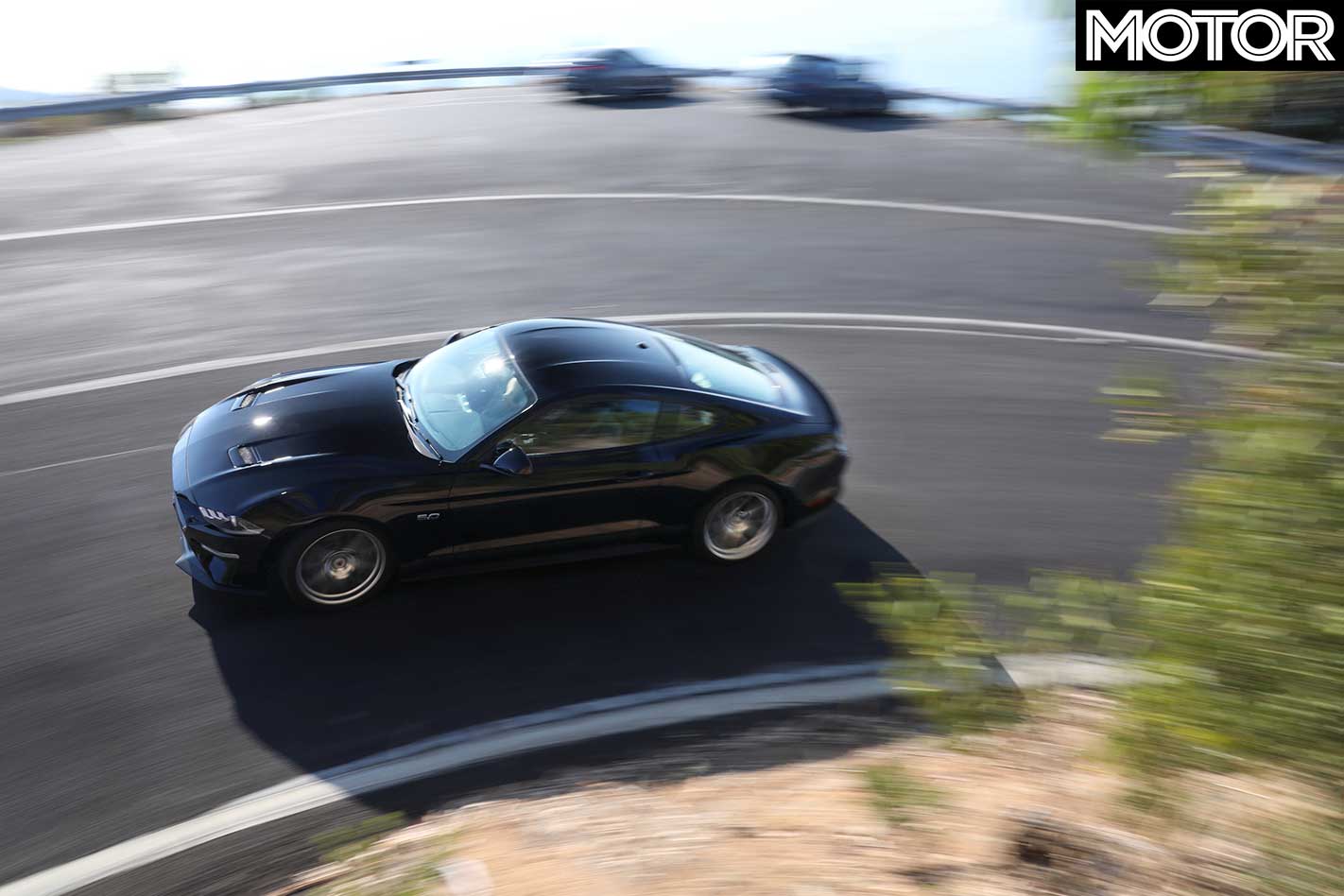
The level of control also means the Mustang is now a more planted gadget and better able to cover ground at higher velocities. It still has the direct steering feel, but that Dude-where’s-my-castor dartiness is gone, replaced by a confidence born of competence. Here is a Mustang where driving faster is, simply, driving faster, not braver. The only downside is that you lose the adjustable damping of the various drive modes. Live with it, okay.
The rest of the package also makes me think this is a particularly sweet example of the Mustang breed. The clutch is light and the shifter for the six-speed, despite being completely stock, is accurate, sharp, smooth and, frankly, the best Mustang gearstick I’ve ever hauled on.
The diff seems tighter in this car, too, and you need to be a bit wary of turning out of driveways where you can sometimes hear a bit of clanking from the rear axle, usually followed by a chirp.
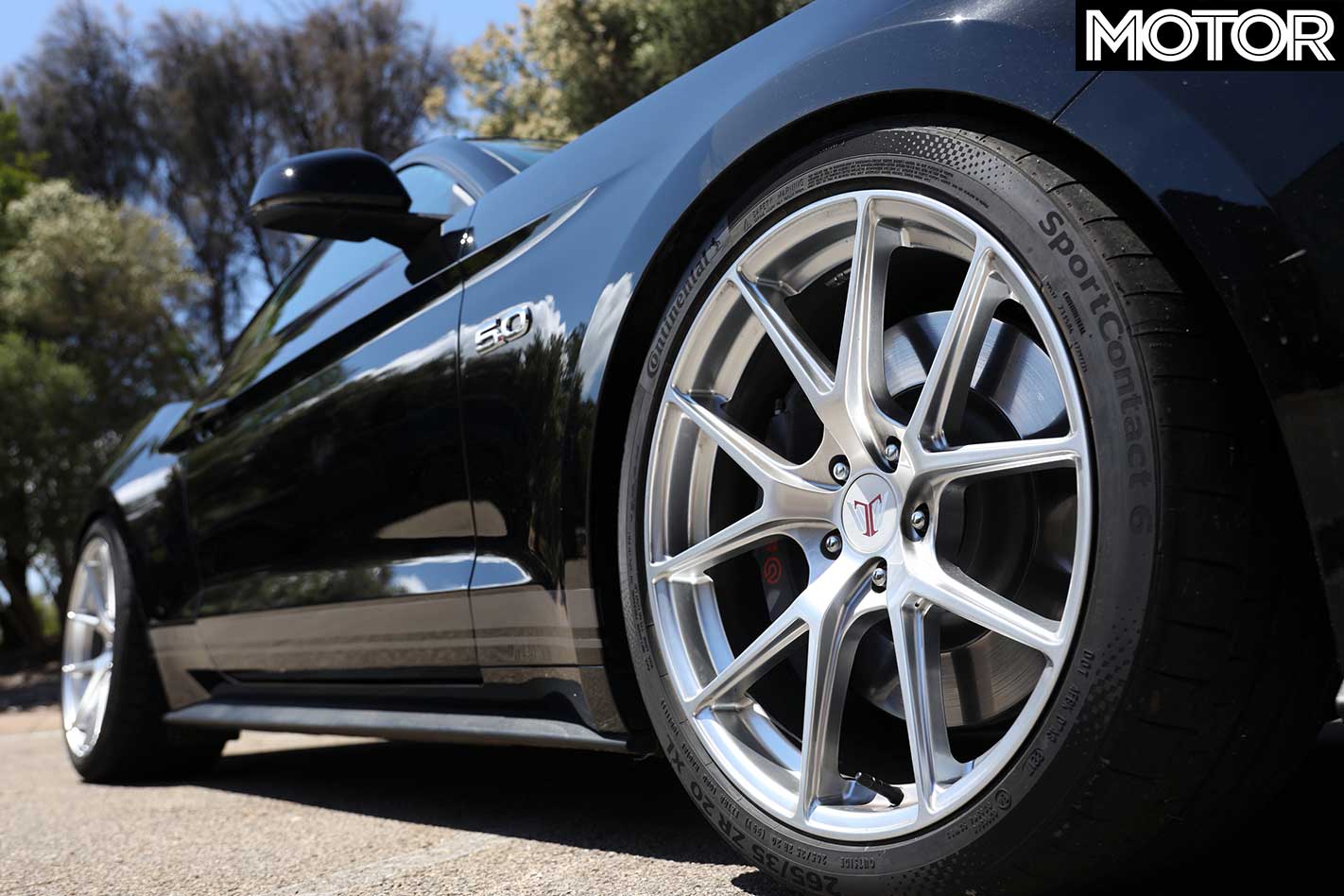
The grip equation is further enhanced by the Conti SportContact6s fitted to this car in a hearty 265/35 ZR20 and 295/30 ZR20 fitment on Tickford-specific alloys (described as semi-forged, whatever that means). And when you jump on the picks, you realise just how good the stock Mustang front six-potters are, with great initial bite and plenty of stopping power. Again, this car felt like the best of its breed in the anchors department, those big tyres helping for sure.
Inside, well, we all know that the MY19 ’Stang is a big step up from the old girl, but a few things still annoy me. The start button looks like it came in a Christmas bon-bon, the park-brake lever is on the far side of the console (although at least it’s not an e-brake) and the cheap looking toggles only toggle one way. But the rest is on-brand in a making-Merca-great-again kind of way.
I really like this car, I do. In so many ways, it’s the best Mustang I’ve driven. But if Tickford reckons it aint broke, yet it can’t run the low-12sec it feels like it should be able to, I’m just left wondering about the point of the whole exercise.
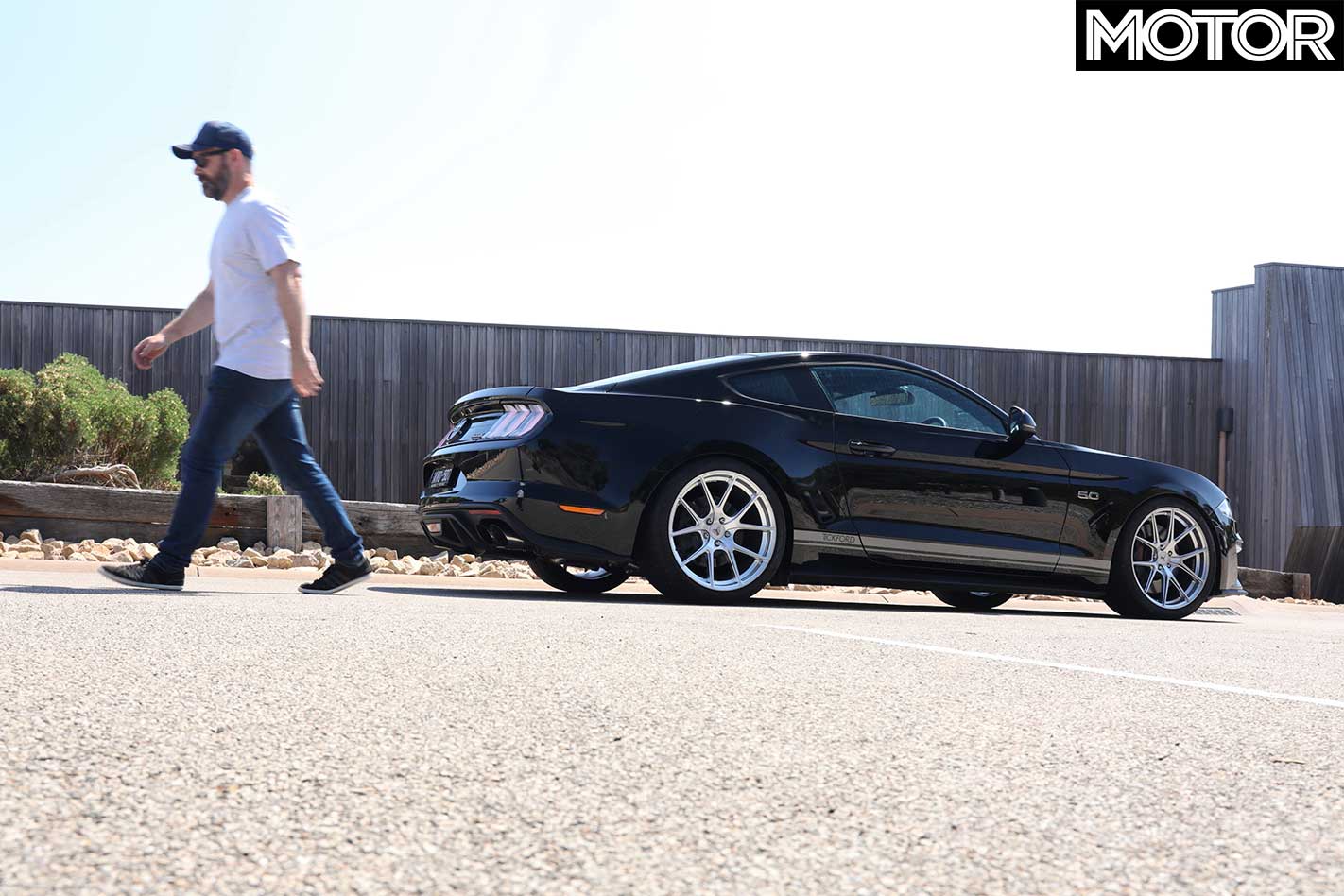
I don’t want to have to wait for a sub-zero winter’s day and then be locked into nailing my quarter mile at the first attempt before the tune goes all wonky on me.
What I need to see is a series of dyno runs, one after the other, with no fall-off in performance to be convinced that my hard-earned thousands are being well spent.
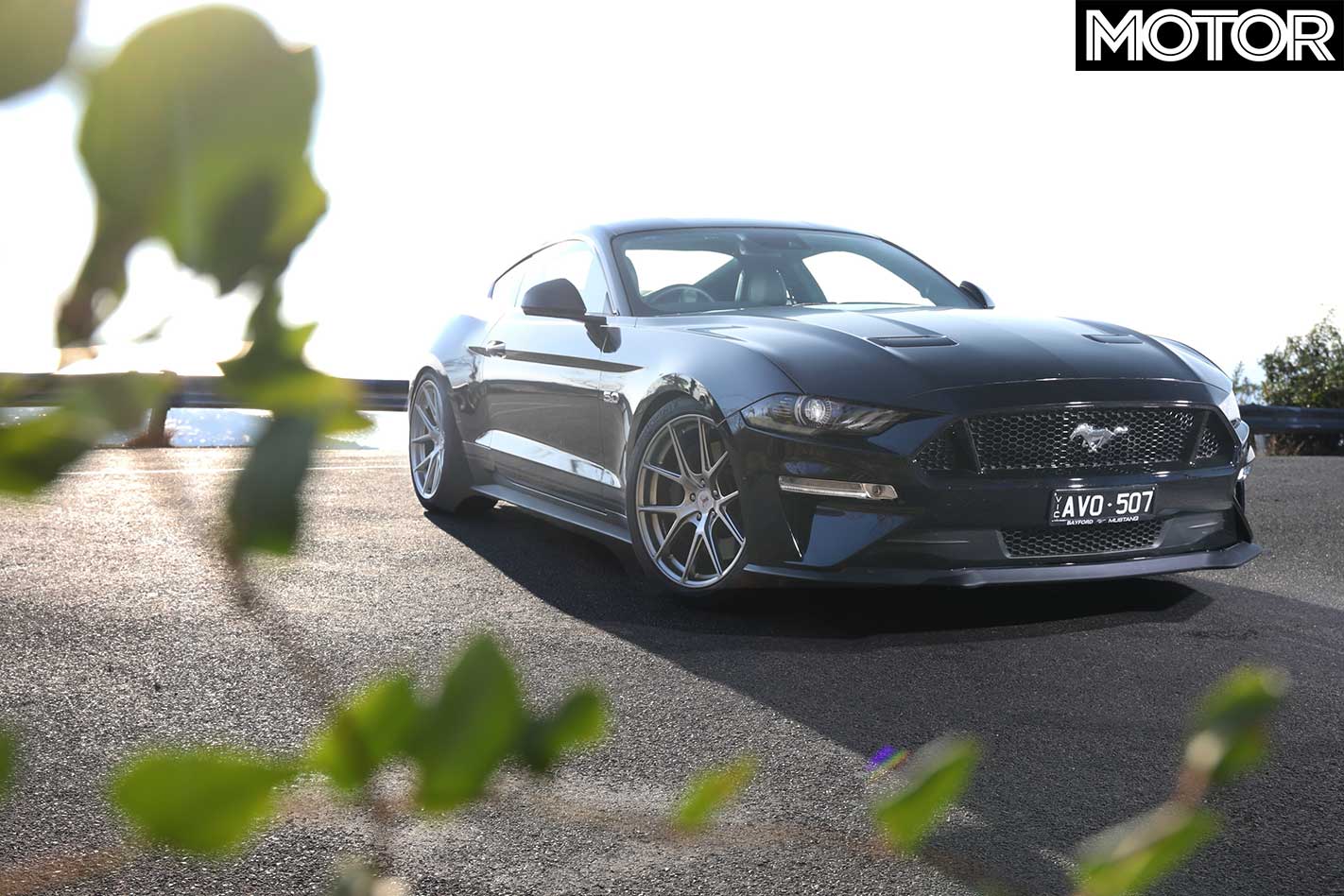
FAST FACTS 2019 Tickford Ford Mustang GT BODY: 2-door, 4-seat coupe DRIVE: rear-wheel ENGINE: 5038cc V8, DOHC, 32v, supercharged BORE/STROKE: 93.0 x 92.7mm COMPRESSION: 12.0:1 POWER: 530kW @ 7250rpm TORQUE: 827Nm @ 4500rpm WEIGHT: 1785kg POWER-TO-WEIGHT: 297kW/tonne TRANSMISSION: 6-speed manual SUSPENSION: struts, coil springs, dampers, anti-roll bar (f); multi-links, coil springs, dampers, anti-roll bar (r) L/W/h: 4789/1916/1387mm WHEELBASE: 2720mm STEERING: electrically assisted rack-and-pinion BRAKES: 380mm slotted, two-piece rotors, 6-piston calipers (f); 330mm slotted, two-piece rotors, single-piston calipers (r) WHEELS: 20.0 x 9.5-inch (f); 20.0 x 11.0-inch (r) TYRES: Continental SportContact 6; 265/35 ZR20 (f); 295/30 ZR20 (r) PRICE: $90,300 (as tested)
PROS: Sweetest, most balanced blown ’Stang yet; value CONS: Wasn’t giving up the numbers down the strip RATING: 3.5 out of 5 stars
The Strip
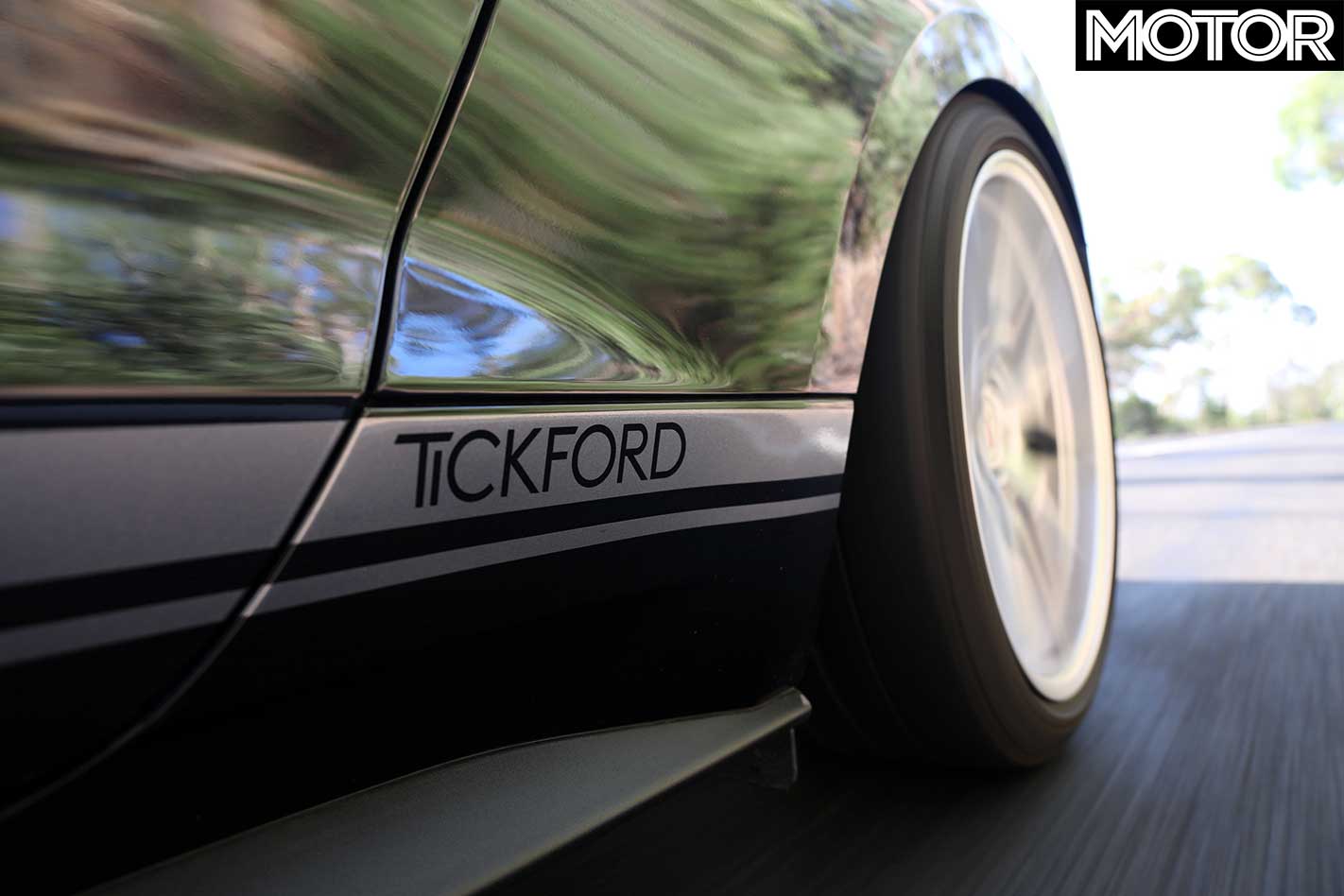
| Tickford Ford Mustang GT | |
| 0-10km/h | 0.40sec |
| 0-20km/h | 0.89sec |
| 0-30km/h | 1.41sec |
| 0-40km/h | 1.86sec |
| 0-50km/h | 2.35sec |
| 0-60km/h | 2.84sec |
| 0-70km/h | 3.31sec |
| 0-80km/h | 4.26sec |
| 0-90km/h | 4.78sec |
| 0-100km/h | 5.31sec |
| 0-110km/h | 5.90sec |
| 0-120km/h | 6.56sec |
| 0-130km/h | 7.55sec |
| 0-140km/h | 8.41sec |
| 0-150km/h | 9.26sec |
| 0-160km/h | 10.18sec |
| 0-170km/h | 11.36sec |
| 0-180km/h | 12.94sec |
| 0-400m | 13.15sec @ 181.09km/h |
| 80-120km/h | 3.0sec |
| 100-0km/h | 35.20m |
| Speed in gears | |
| 1st | 85km/h @ 7400rpm |
| 2nd | 131km/h @ 7400rpm |
| 3rd | 194km/h @ 7400rpm |
| 4th | 250km/h @ 6700rpm* |
| 5th | 250km/h @ 5430rpm* |
| 6th | 250km/h @ 4150rpm* |
Heathcote Dragway, 17˚C, dry. Driver: Scott Newman *Manufacturer’s claim
How Tickford makes 530kW
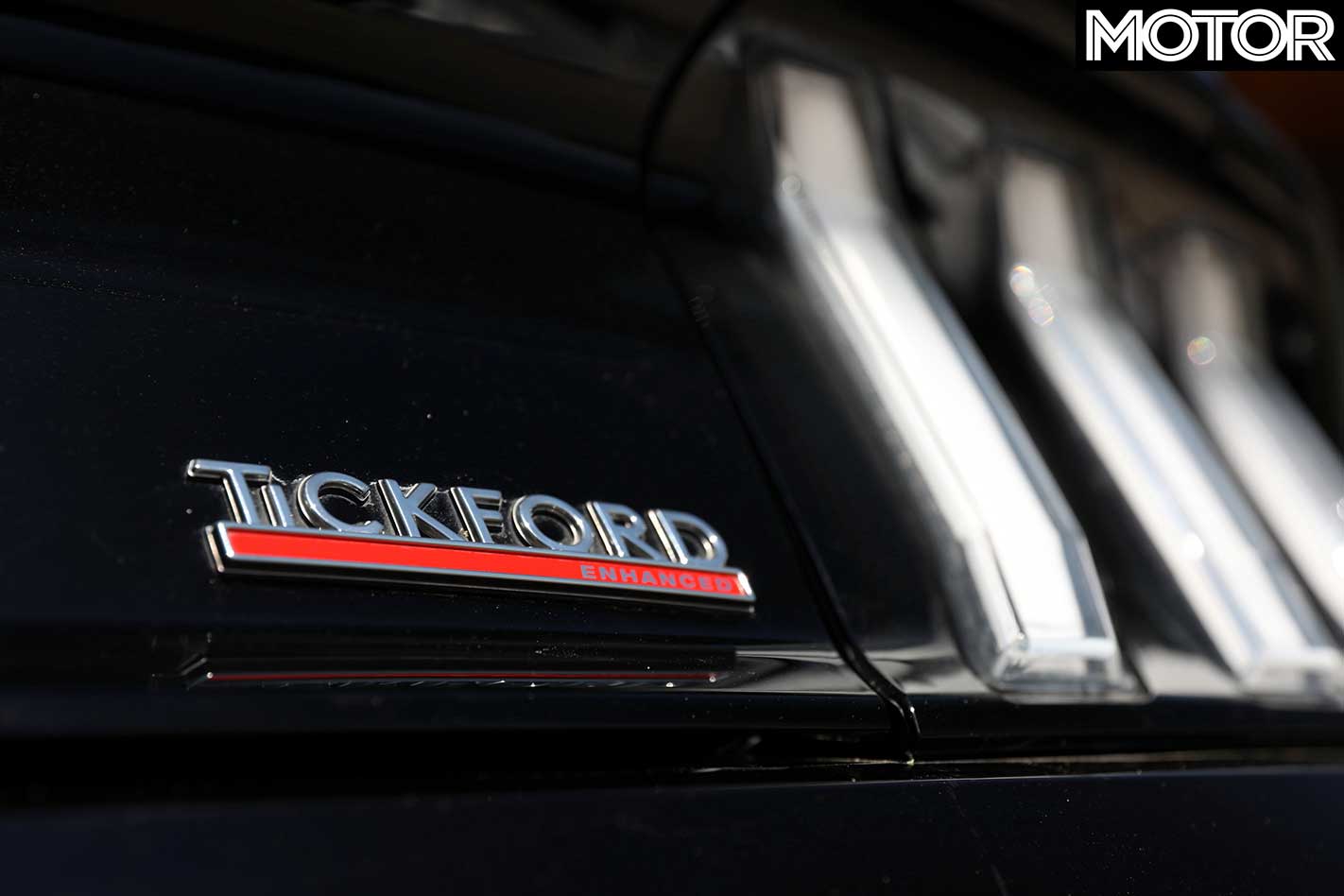
Whether you opt for the cosmetic add-ons here at $825 for the stripes (the build-plate and Tickford-modified decal comes standard) is a matter for the individual, but the aspect that has Mustang fans licking their lips is – as usual – the blower kit. That starts with the latest spec 2.3-litre Roush twin-screw and extends to that all-important ECU calibration and tune.
Further supporting the theory that heat might be the enemy here, the Tickford package includes a more efficient radiator and an air-to-water intercooler. The intercooler also features its own, self-contained cooling system, so it isn’t adding to the engine temps via the radiator. A low-restriction air-filter is housed under a see-through panel on the air-box and Tickford quotes a kit-fitting time of two days – drive-in, drive-out.

It’s all yours for $17,995 fitted, while the suspension and tyres and other stuff is on top of that. The 9.5 x 11.0-inch wheels and tyres are $4500, but you can spend a bit more and go for a seven-spoke design in 9.0 x 11-inch size.
Law of diminishing returns must kick in here somewhere. And the suspension will rush you $3990 fitted which, to me, seems like the bargain of the century and would be the first box I’d tick, even before I’d made up my mind about the supercharger and the conditions it seems to impose on the V8 coupe.

